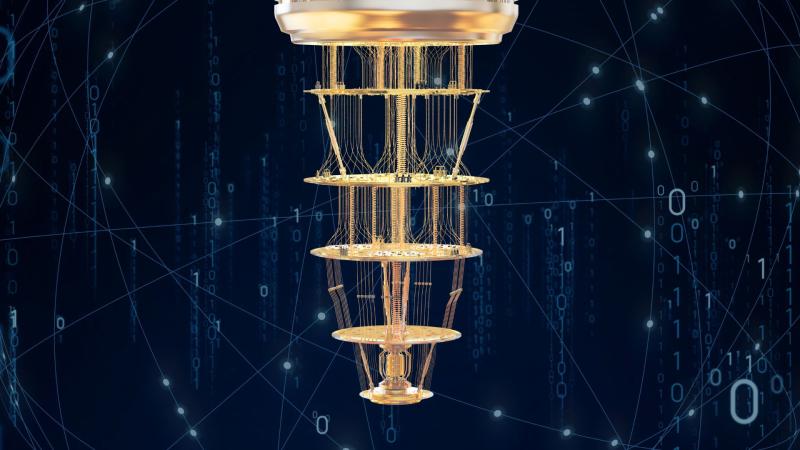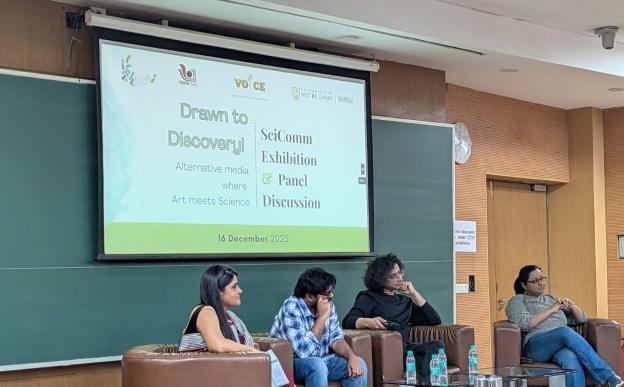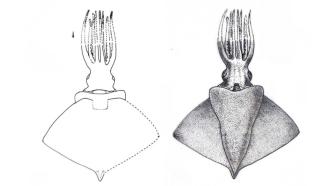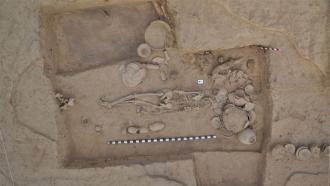
Quantum computers are often touted as the next big revolution in computing. Unlike classical computers, which use transistors to relay information as bits (0s and 1s), quantum computers use qubits, which are particles that follow the peculiar rules of the quantum world, such as entanglement and superposition. At the heart of quantum computing and communication is controlling particles of light or photons, which can carry quantum information.
One of the key properties of light is its phase, which can be thought of as the timing between two photons. When two photons are in phase, their waves overlap perfectly, and when they don’t overlap, they are said to have a phase difference. Apart from the usual dynamic phase that the light picks up simply by travelling through space or materials, there is another kind of phase called the geometric phase, also known as the Pancharatnam-Berry phase. It was named after it was independently discovered by Indian physicist Shivaramakrishnan Pancharatnam and Michael Berry from the United Kingdom.
The geometric phase arises from the path or shape of the light's journey in a more abstract sense and is dependent on the geometry of the path taken. Specifically, how its polarisation state or the direction in which the waves are vibrating changes. If you imagine the polarisation of light as an arrow pointing in the direction of vibration, as the wave completes one cycle, this arrow returns to its origin state. However, when a geometric phase is present, this arrow differs slightly in each cycle, tracing a closed loop on a special map for polarisation called the Poincaré sphere. This indicates that the light has picked up a geometric phase. Unlike the dynamic phase, the geometric phase doesn't depend on the light's exact speed or the length of the path, making it useful for precise control.
The challenge has been measuring this geometric phase accurately, especially in quantum systems. Traditional methods often employ interferometers – devices that split a light beam, send the two halves along different paths, and then recombine them to observe how their phases interfere. The problem is interferometers are sensitive to both the geometric phase and the dynamic phase.
Now, a team of researchers from the Physical Research Laboratory, Ahmedabad, Indian Institute of Technology (IIT) Gandhinagar, ICFO-Institut de Ciencies Fotoniques, Spain, Institucio Catalana de Recercai Estudis Avancats (ICREA), Spain, Indian Institute of Science (IISc), Bengaluru and The Institute of Mathematical Sciences (IMSc), Chennai, have found a new way to tackle this. They figured out how to transfer the geometric phase from a simple, classical laser beam onto a pair of entangled photons. Entanglement is a property of quantum particles wherein they seemingly instantly influence each other’s quantum properties, like spin or phase, even when separated by cosmic distances.
To transfer the geometric phase, they used a standard laser beam and sent it through a special set of optics called waveplates, which can rotate the polarisation of the light by a specific amount. Specifically, they used a quarter-wave plate (which rotates the polarisation by 90 degrees), a half-wave plate (which rotates the polarisation by 180 degrees), and another quarter-wave plate, or QHQ setup. By simply rotating the middle half-wave plate, they could cause the laser beam's polarization to trace different loops on the Poincaré sphere, thereby imprinting a specific amount of geometric phase onto the classical light.
Next, they utilised this phase-imprinted classical laser beam to generate pairs of entangled photons through a process known as spontaneous parametric down-conversion (SPDC). This happens in a type of crystal placed inside a Sagnac interferometer – a loop where light travels in both clockwise and counter-clockwise directions. The entangled photons generated in this setup inherited the geometric phase from the classical laser beam that created them.
The researchers then devised a way to measure the transferred geometric phase. Instead of using a traditional interferometer on the entangled photons themselves, they measured the photons' properties directly. They examined coincidence counts or the frequency at which the two entangled photons were detected simultaneously after passing through polarization filters.
They found that the pattern of these coincidence counts changed predictably as they varied the geometric phase of the original classical laser beam. For specific measurement settings (referred to as diagonal or anti-diagonal), the coincidence counts varied in a wave-like pattern directly related to the geometric phase. For other settings (horizontal and vertical), the counts remained constant, just like the classical laser beam. This demonstrated that the geometric phase had indeed been transferred and could be measured without a traditional interferometer.
They also measured other quantum properties, such as the Bell parameter, a value that indicates the degree of entanglement between the photons, and the fidelity of the quantum state, which measures how closely the particle approaches a desired perfect state. They found that the Bell parameter varied sinusoidally with the geometric phase, showing they could tune the quantum correlations. By changing the geometric phase of the classical pump beam, they could smoothly transform the entangled photon state between different, important quantum states known as Bell states, including orthogonal states, which are entirely distinct in the quantum world. This transition between states is a fundamental operation required for quantum computing, typically performed with complex quantum gates. Here, they achieved it simply by adjusting the geometric phase of classical light.
The new study makes a significant contribution to our understanding and applications of the geometric phase of light. Firstly, it provides a non-interferometric method to measure the geometric phase, which is much more stable and unaffected by the dynamic phase. Secondly, it demonstrates a simple, all-optical method to transfer a classical geometric phase to a quantum state.
Most importantly, it demonstrates for the first time that the geometric phase of a classical beam can be utilised as a tunable knob to control the type of maximally entangled Bell state produced while maintaining a high degree of entanglement. The setup is also described as compact and passive, making it promising for future technologies. While the experimental results were very close to the theoretical predictions, the researchers noted minor deviations due to real-world imperfections, such as slight issues with the optical components and signal losses. The research nevertheless paves the way for building smaller, more reliable quantum devices, potentially leading to advancements in secure communication networks and the development of powerful new quantum computers.






